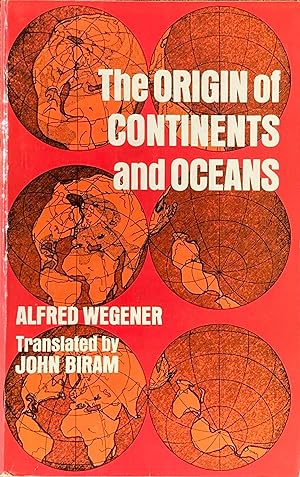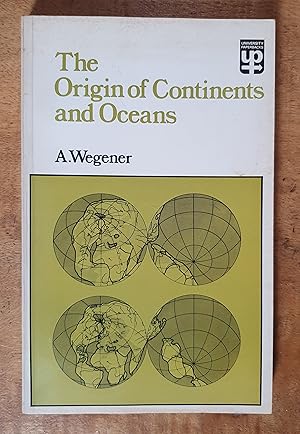The Origin of Continents and Oceans by Wegener a (3 results)
FeedbackSearch filters
Product Type
- All Product Types
- Books (3)
- Magazines & Periodicals (No further results match this refinement)
- Comics (No further results match this refinement)
- Sheet Music (No further results match this refinement)
- Art, Prints & Posters (No further results match this refinement)
- Photographs (No further results match this refinement)
- Maps (No further results match this refinement)
- Manuscripts & Paper Collectibles (No further results match this refinement)
Condition
- All Conditions
- New (No further results match this refinement)
- Used (3)
Binding
Collectible Attributes
- First Edition (1)
- Signed (No further results match this refinement)
- Dust Jacket (No further results match this refinement)
- Seller-Supplied Images (3)
- Not Print on Demand (3)
Language (2)
Free Shipping
- Free Shipping to United Kingdom (No further results match this refinement)
Seller Location
Seller Rating
-
The origin of continents and oceans
Seller: Acanthophyllum Books, Holywell, FLINT, United Kingdom
Association Member: PBFA
Paper covers. Condition: V.g. No Jacket. 4th edition. Little used. Weight: 1.0 Language: English.
-
THE ORIGIN OF CONTINENTS AND OCEANS
Published by Methuen & Co, London, 1970
Seller: Uncle Peter's Books, Clunes, NSW, Australia
£ 24.91
Convert currency£ 27.55 shipping from Australia to United KingdomQuantity: 1 available
Add to basketSoft cover. Condition: Good. "A classic study in the field of Geomorphology." Soft covers are lightly rubbed and creased at the corners. Head and tail of spine are bumped. Light scuff marks front and back. Simple binding is tidy. Spine sunned. Otherwise this book is in good condition. *We try to describe the faults of our books meticulously - they often present better than they sound.
-
The Origin of Continents and Oceans [Jan Gillett's copy]
Published by Methuen & Co Ltd, London, 1924
Seller: Mike Park Ltd, London, United Kingdom
First Edition
Cloth. Condition: Fair. First British edition. First British edition. Illustrated with a few text diagrams, octavo, pp xx, 212 + 8 page publisher's catalogue, a little age-toned and used internally, red cloth very faded, a little worn overall, the spine-head pulled. RARE. [From the library of the Kew botanist Jan Gillett, with his signature and address on the front endpaper.]. {Wegener was a German climatologist, geologist, geophysicist, meteorologist, and polar researcher. During his lifetime he was primarily known for his achievements in meteorology and as a pioneer of polar research, but today he is most remembered as the originator of continental drift hypothesis by suggesting in 1912 that the continents are slowly drifting around the Earth (German: Kontinentalverschiebung). His hypothesis was controversial and widely rejected by mainstream geology until the 1950s, when numerous discoveries such as palaeomagnetism provided strong support for continental drift, and thereby a substantial basis for today's model of plate tectonics. In the early 1950s, the new science of paleomagnetism pioneered at the University of Cambridge by S. K. Runcorn and at Imperial College by P.M.S. Blackett was soon producing data in favour of Wegener's theory. By early 1953 samples taken from India showed that the country had previously been in the Southern hemisphere as predicted by Wegener. By 1959, the theory had enough supporting data that minds were starting to change, particularly in the United Kingdom where, in 1964, the Royal Society held a symposium on the subject. The 1960s saw several relevant developments in geology, notably the discoveries of seafloor spreading and Wadati-Benioff zones, and this led to the rapid resurrection of the continental drift hypothesis in the form of its direct descendant, the theory of plate tectonics. Maps of the geomorphology of the ocean floors created by Marie Tharp in cooperation with Bruce Heezen were an important contribution to the paradigm shift that was starting. Wegener was then recognized as the founding father of one of the major scientific revolutions of the 20th century. Because of this delay in acceptance of his theory, the book was never reprinted until the 1960's and 1970's.}.




![Seller image for The Origin of Continents and Oceans [Jan Gillett's copy] for sale by Mike Park Ltd](https://pictures.abebooks.com/inventory/md/md31148315614.jpg)